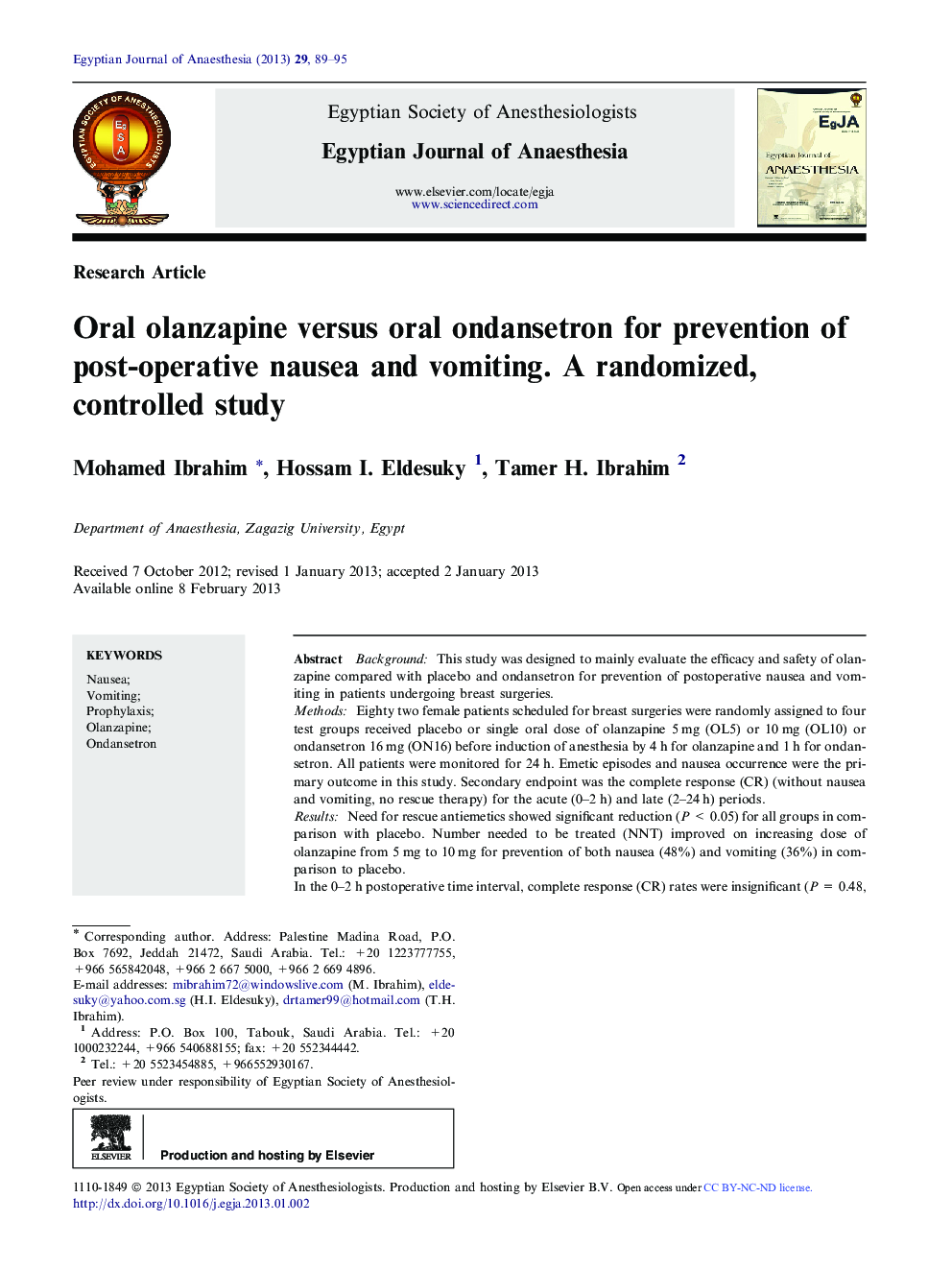| Article ID | Journal | Published Year | Pages | File Type |
|---|---|---|---|---|
| 2756458 | Egyptian Journal of Anaesthesia | 2013 | 7 Pages |
BackgroundThis study was designed to mainly evaluate the efficacy and safety of olanzapine compared with placebo and ondansetron for prevention of postoperative nausea and vomiting in patients undergoing breast surgeries.MethodsEighty two female patients scheduled for breast surgeries were randomly assigned to four test groups received placebo or single oral dose of olanzapine 5 mg (OL5) or 10 mg (OL10) or ondansetron 16 mg (ON16) before induction of anesthesia by 4 h for olanzapine and 1 h for ondansetron. All patients were monitored for 24 h. Emetic episodes and nausea occurrence were the primary outcome in this study. Secondary endpoint was the complete response (CR) (without nausea and vomiting, no rescue therapy) for the acute (0–2 h) and late (2–24 h) periods.ResultsNeed for rescue antiemetics showed significant reduction (P < 0.05) for all groups in comparison with placebo. Number needed to be treated (NNT) improved on increasing dose of olanzapine from 5 mg to 10 mg for prevention of both nausea (48%) and vomiting (36%) in comparison to placebo.In the 0–2 h postoperative time interval, complete response (CR) rates were insignificant (P = 0.48, P = 0.11) for olanzapine 5 mg and 10 mg when compared to placebo; and significant for ondansetron 16 mg (P = 0.04). For the 2–24 h interval after surgery, CR rates were significant for OL5, OL10, and ON16 (P = 0.02, P = 0.005, P = 0.007) when compared to placebo. On comparing both olanzapine doses with ondansetron 16 mg during 0–2 h and 2–24 h study periods, there were no significant differences.ConclusionOlanzapine can be used safely and effectively for prophylaxis against PONV especially for late postoperative periods.
